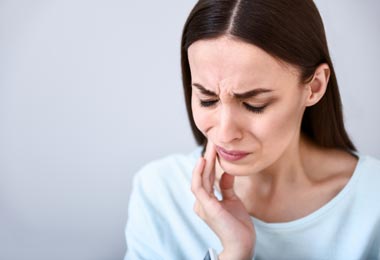Cluster headaches cause intense, sharp pain focused on one side of the head, usually near one eye. They occur in cycles called clusters, which can last for several weeks or months. Each headache episode strikes suddenly and lasts between 15 minutes and three hours. Many people experience these headache attacks at the same time daily, often waking them up during the night.
The cyclical pattern of cluster attacks differs from other types of head pain. During a cluster period, individuals may suffer multiple episodes each day, disrupting sleep and daily routines. After the cluster ends, a remission phase may follow, lasting months or years without symptoms. This repeating cycle of intense pain and relief makes managing the condition difficult.
Signs and Symptoms to Watch For
The pain caused by cluster headaches feels intensely burning or stabbing, often reaching an unbearable level of severity. The eye on the side where the headache pain occurs may become red and water uncontrollably during an attack. Along with eye symptoms, the nose on the same side often becomes either stuffy or begins to run. People experiencing cluster headaches often feel restless and pace around, which contrasts with migraine sufferers who usually prefer to lie still during their headache episodes.
In addition to pain and nasal symptoms, some individuals notice their eyelids drooping on the affected side during an episode. Sweating or flushing also commonly occurs on the same side as the pain. These physical symptoms often add to the distress and discomfort experienced during each attack. The combination of intense pain and accompanying symptoms makes this condition especially difficult to endure.
What Causes This Condition
Researchers connect this condition to the hypothalamus, the brain area responsible for regulating the body’s internal clock. Disruptions in sleep patterns, including jet lag or inconsistent sleep, often trigger these severe episodes. Drinking alcohol during active periods frequently causes attacks to start suddenly. Smoking also raises the likelihood of developing the condition, increasing overall risk.
Certain strong smells, such as paint fumes or perfumes, can provoke cluster headache episodes in sensitive individuals. Changes in weather and seasonal shifts may influence when cluster periods begin or end. These environmental and lifestyle factors seem to interact with the brain’s timing mechanisms. Understanding these triggers helps people better manage their headache condition and avoid attacks.
Ways to Manage and Treat Cluster Headaches
Inhaling pure oxygen through a mask often relieves cluster headache pain within minutes. Triptans, such as sumatriptan, provide fast relief when injected or used as a nasal spray. Doctors may prescribe calcium channel blockers like verapamil to reduce the frequency of attacks, while short-term corticosteroids can ease symptoms during active phases. Additional treatments include nerve blocks and nerve-stimulating devices, and some experimental psychedelic therapies show promise but require medical supervision.
Take Charge of Your Headache Health Today
Keeping a regular sleep schedule helps prevent headache attacks and lowers your risk. Avoid alcohol, tobacco, and strong odors to reduce potential triggers. Track your symptoms carefully and seek medical advice if they worsen or change. Building a strong relationship with a specialist helps create an effective treatment plan and improves your quality of life.

